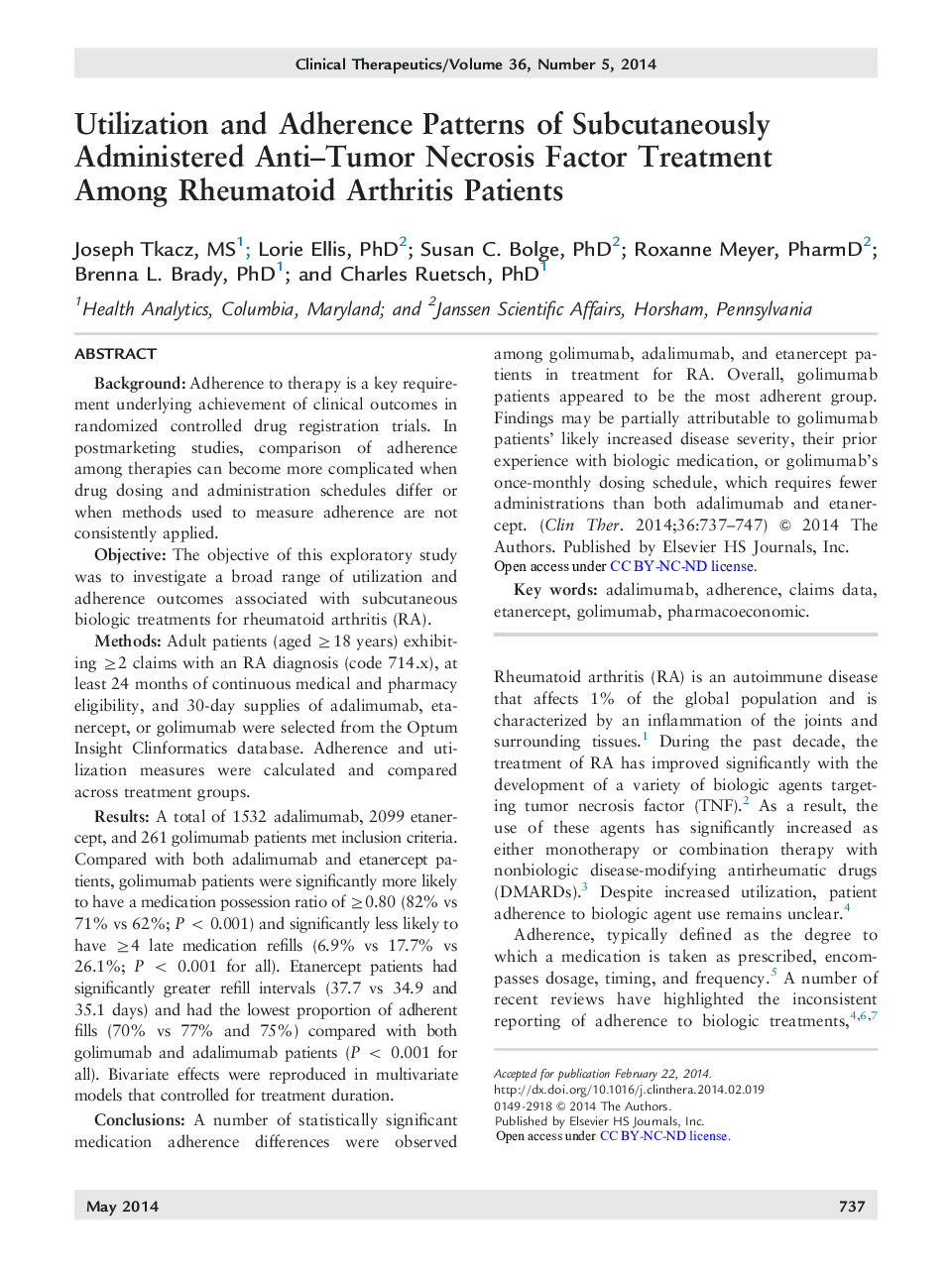| کد مقاله | کد نشریه | سال انتشار | مقاله انگلیسی | نسخه تمام متن |
|---|---|---|---|---|
| 5825517 | 1119905 | 2014 | 11 صفحه PDF | دانلود رایگان |
BackgroundAdherence to therapy is a key requirement underlying achievement of clinical outcomes in randomized controlled drug registration trials. In postmarketing studies, comparison of adherence among therapies can become more complicated when drug dosing and administration schedules differ or when methods used to measure adherence are not consistently applied.ObjectiveThe objective of this exploratory study was to investigate a broad range of utilization and adherence outcomes associated with subcutaneous biologic treatments for rheumatoid arthritis (RA).MethodsAdult patients (aged â¥18 years) exhibiting â¥2 claims with an RA diagnosis (code 714.x), at least 24 months of continuous medical and pharmacy eligibility, and 30-day supplies of adalimumab, etanercept, or golimumab were selected from the Optum Insight Clinformatics database. Adherence and utilization measures were calculated and compared across treatment groups.ResultsA total of 1532 adalimumab, 2099 etanercept, and 261 golimumab patients met inclusion criteria. Compared with both adalimumab and etanercept patients, golimumab patients were significantly more likely to have a medication possession ratio of â¥0.80 (82% vs 71% vs 62%; P < 0.001) and significantly less likely to have â¥4 late medication refills (6.9% vs 17.7% vs 26.1%; P < 0.001 for all). Etanercept patients had significantly greater refill intervals (37.7 vs 34.9 and 35.1 days) and had the lowest proportion of adherent fills (70% vs 77% and 75%) compared with both golimumab and adalimumab patients (P < 0.001 for all). Bivariate effects were reproduced in multivariate models that controlled for treatment duration.ConclusionsA number of statistically significant medication adherence differences were observed among golimumab, adalimumab, and etanercept patients in treatment for RA. Overall, golimumab patients appeared to be the most adherent group. Findings may be partially attributable to golimumab patients' likely increased disease severity, their prior experience with biologic medication, or golimumab's once-monthly dosing schedule, which requires fewer administrations than both adalimumab and etanercept.
Journal: Clinical Therapeutics - Volume 36, Issue 5, 1 May 2014, Pages 737-747
